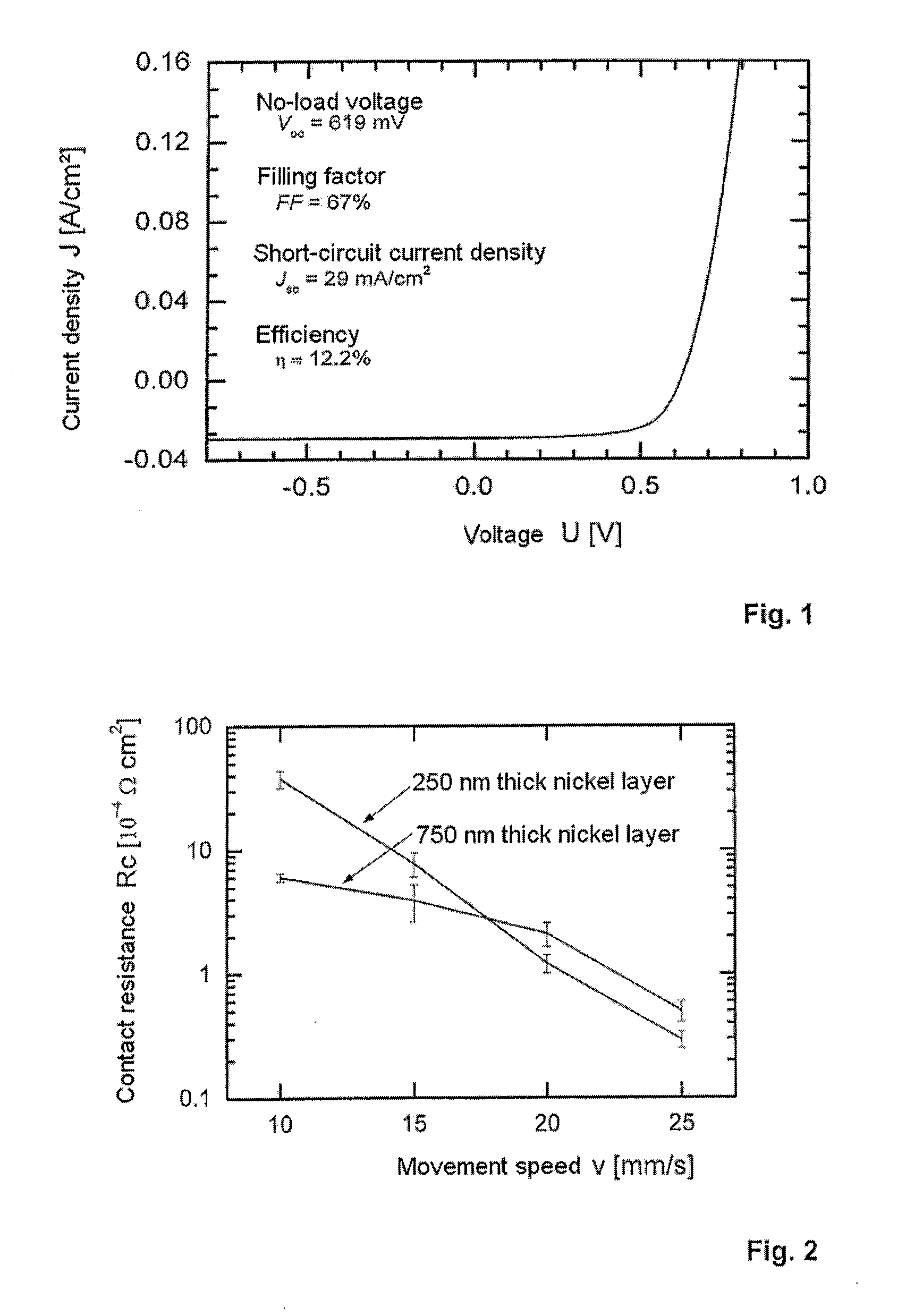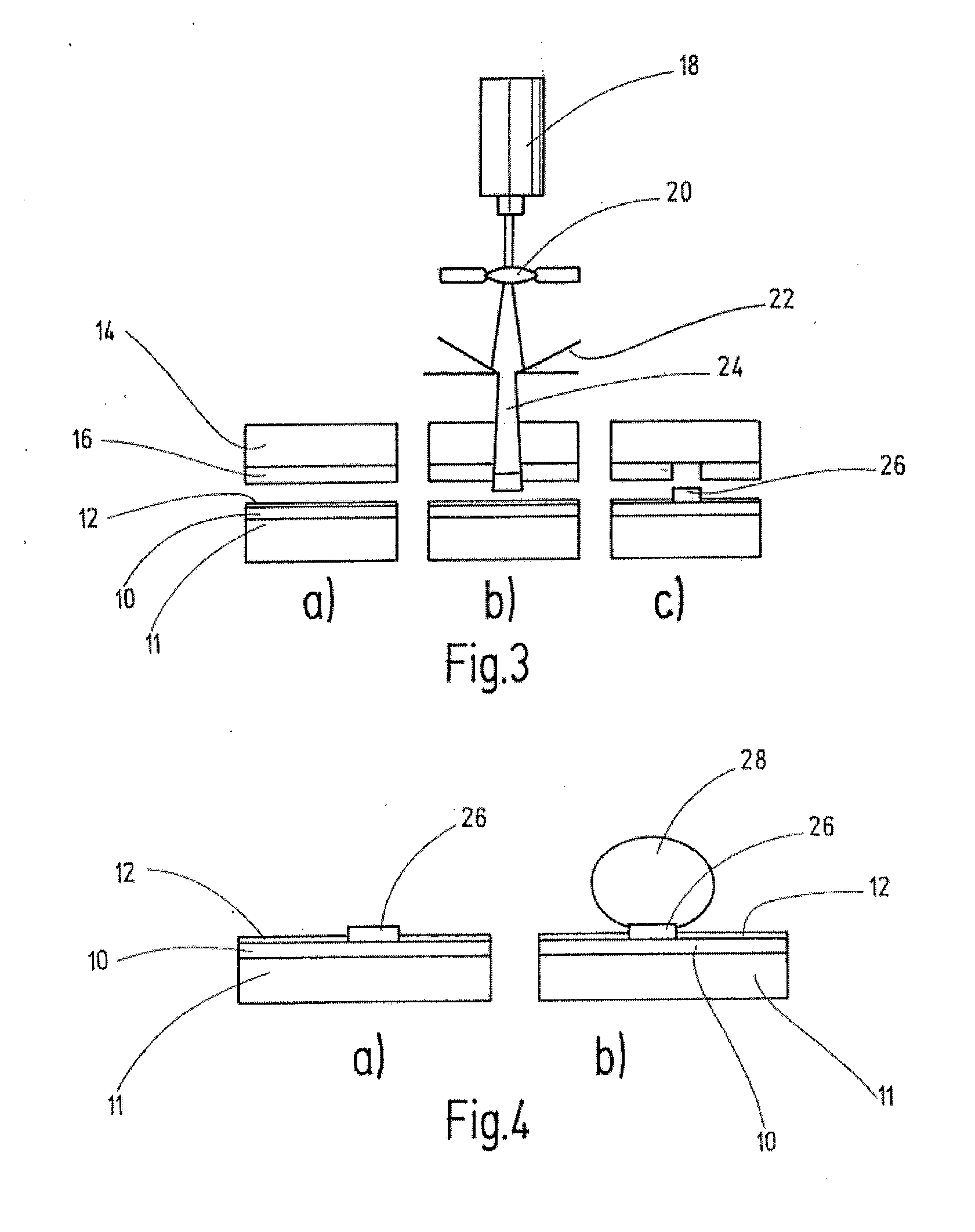Method of Contacting a Semiconductor Substrate
a technology of semiconductor substrates and contact points, which is applied in the direction of semiconductor devices, electrical equipment, photovoltaic energy generation, etc., can solve the problems of high temperature step, too expensive method, and loss of metal used,
- Summary
- Abstract
- Description
- Claims
- Application Information
AI Technical Summary
Benefits of technology
Problems solved by technology
Method used
Image
Examples
Embodiment Construction
[0043]The principle of the LIFT process will be explained in more detail in the following text with reference to FIG. 3.
[0044]During the production of a solar cell, this solar cell must be provided with a metallic contact on the front face and on the rear face. By way of example, FIGS. 3a), b), c) show a p-type-doped base material (Si wafer or polycrystalline Si) which is annotated 11, on the front face of which a layer of n-type-doped material is located, which forms the emitter. This substrate layer 10 is provided with a cover layer 12, which is an antireflective layer, such as a silicon-nitride layer with a layer thickness of 50 to 100 nm.
[0045]A metallic seed structure 26 is now produced directly on the surface of the substrate layer 10, through the cover layer 12, by means of the LIFT process. For this purpose, a mount material 14 in the form of a thin glass layer or a thin film is arranged in the immediate vicinity in front of the substrate layer 10, and is provided with a thi...
PUM
 Login to View More
Login to View More Abstract
Description
Claims
Application Information
 Login to View More
Login to View More - R&D
- Intellectual Property
- Life Sciences
- Materials
- Tech Scout
- Unparalleled Data Quality
- Higher Quality Content
- 60% Fewer Hallucinations
Browse by: Latest US Patents, China's latest patents, Technical Efficacy Thesaurus, Application Domain, Technology Topic, Popular Technical Reports.
© 2025 PatSnap. All rights reserved.Legal|Privacy policy|Modern Slavery Act Transparency Statement|Sitemap|About US| Contact US: help@patsnap.com



